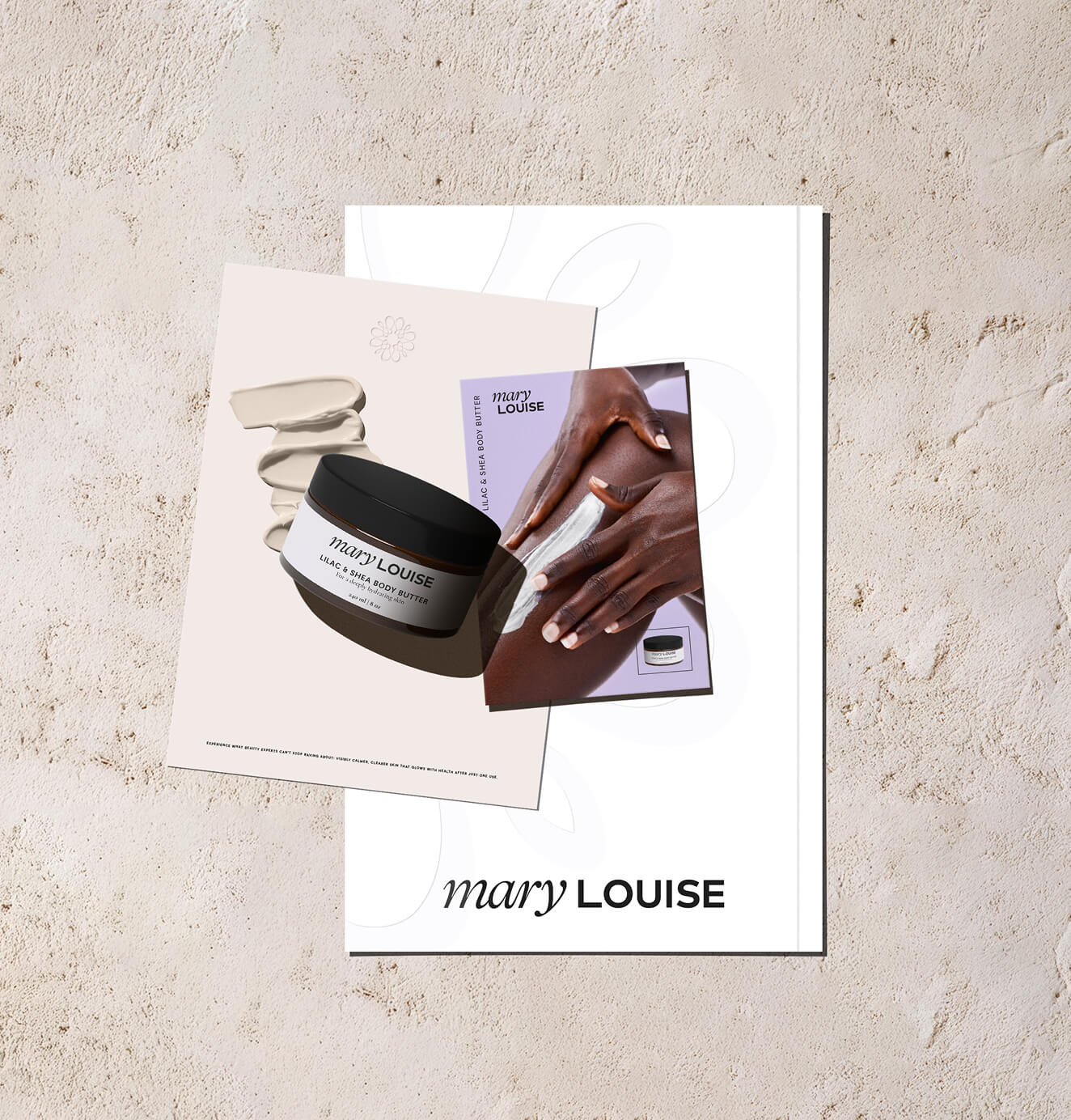How to Create a Brand Story Your Customers Will Love
03/11/2025
Brand Strategy
A memorable brand story is more than marketing—it's the heartbeat of your business that inspires trust and loyalty.

A great brand story is one that resonates with your customers and speaks to their values. It’s a powerful tool for connecting with your audience, enhancing your reputation, and building customer loyalty by articulating your brand’s mission. But crafting a compelling brand story isn’t always easy. Before we get into it, let’s get clear on a few things.
.png)


What is a Brand Story?



A brand story is a brand's narrative that describes your company’s mission, values, and purpose.
It focuses on the emotional connection between your business and customers by sharing why your brand exists and why you do what you do.
Why is a Brand Story Important?
Your brand’s story helps to make an emotional connection with potential customers.
By understanding who you are and what sets you apart from your competition, customers can trust and believe in your product or service.
Additionally, it can create a lasting impression of your company which is essential for customer loyalty. Capturing and maintaining the audience's attention through compelling storytelling is crucial in a landscape filled with distractions.
Now that we know what a brand’s story is and why it’s important, we can continue with our step by step process to writing your own brand story.
Are you searching for ways to elevate your brand’s strategy, positioning and story?
Look no further than The Branded Agency!
Our team of experts has years of experience crafting stories that will captivate your customers.
Don't wait any longer—reach out today to get started on building the perfect narrative for your business success.
Identifying Your Approach as You Prepare to Share the Story of Your Brand
There are many different approaches you can take when creating a brand story, and incorporating your company's history is a foundational element. One popular method is to focus on telling the story of your brand’s origins and evolution. This can help establish a sense of authenticity and familiarity with your audience by highlighting the history behind your brand and its underlying values.
Another effective approach is to focus on the voices of your customers and employees, which gives your brand story an engaging personal touch. Through interviews, surveys, or other forms of market research, you can gather the perspectives and experiences of your customers and employees to craft a story that truly resonates with them.
By tapping into authenticity, creativity, and a deep understanding of your target audience, you can create a powerful brand narrative that helps build lasting connections with your customers and position your brand as a leader in your industry.
Who Are You Telling Your Story To?
Identify Your Customers
Before you start creating your brand story, it's important to take the time to identify and understand your target audience. This means closely analyzing who your customers are, what their needs and desires are, and how they interact with your brand across different channels and touchpoints. Head to our Brand Touchpoints blog for an ultimate guide on how to maximize brand touchpoints.
Do Market Research
One effective way to get a sense of your audience is to conduct market research. This can include surveys, focus groups, and other forms of qualitative research that help you get a deeper understanding of your customers' perspectives and experiences.
Get Employee Perspectives
Another method to get acquainted with your audience is to ask your frontline staff. They have direct experience interacting with the customer. By incorporating employee voices into your brand story, you can help build a sense of cohesion and collaboration within your organization.
Once you have a clear understanding of your audience and how they'll use your products or services, you can use this information to craft a brand story with resonance, one that positions your brand as a leader in your industry.
Why Do You Need a Brand Story?












At its core, a brand story is an essential part of building a strong brand identity. It helps connect with your audience on an emotional level by establishing a deeper sense of familiarity and resonance.
Whether you are just starting out with your brand or looking to reinvigorate your existing story, a well-crafted brand narrative is a powerful tool that can help take your business to the next level.
What are the Key Ingredients to Writing a Good Brand Story?
One important element of a good brand story is authenticity. This means ensuring that your story is rooted in real-world experiences and perspectives rather than simply crafting a narrative that sounds good or fits with popular trends.
It's also important to be creative and engaging, which can help capture the interest of your audience and keep them engaged over time.
In addition, a deep understanding of your audience is essential for crafting a brand story that helps your consumers feel heard and recognized. This means doing market research to gain insights into who your customers are, what they want and need, and how they interact with your brand.
Sharing Your Brand Values With Your Authentic Brand Story
Whether you are a new startup looking to establish your brand presence or an established company looking to reinvigorate your brand's story, crafting a compelling and authentic brand narrative can help showcase your company’s core values and bring your unique vision to life.
Your brand’s values include the beliefs and principles that form the foundation of your company. A brand’s values can include anything from a commitment to customer service excellence to an emphasis on sustainability and social responsibility to employee welfare and development.
By sharing these values with your brand story, you can create a narrative that resonates deeply with your customers, creates an emotional connection, and helps differentiate you from competitors in the marketplace.
How Your Mission and Vision Impacts the Story You Tell
Your brand's mission and vision are essential components of a successful brand story. The mission is the purpose that drives your business forward and defines what you stand for, while your brand's vision is a long-term goal, the image of the ideal future that guides the future direction of your company.
- The brand's mission is often shared within the story as the catalyst for change, the why behind the brand's challenges, actions, and decisions.
- The brand's vision is often used to suggest the story's outcome or what the brand hopes the relationship will culminate in.
An important difference - the brand mission is an internal engine while the brand's vision incorporates the actions of the customer and their interactions with the brand.
What are the 3 P's of Creating a Brand Story?
There are many different approaches you can take when creating a great brand story, but some key elements to consider include the 3 P's: Purpose, Promise, and Personality.
The first P, Purpose, refers to the underlying reason for your brand's existence. This could be a social mission you are striving to achieve or simply the desire to make a positive impact in your industry or community. Understanding your purpose can help guide all of your branding and marketing efforts and build an emotional connection with your clientele, as well as help inform other aspects of your brand stories.
The second P, Promise, refers to the unique value proposition or benefits that your brand offers to its customers. This could include things like quality, convenience, reliability, or other factors that help set your brand apart from your competitors. By highlighting this promise in your story, you can establish a clear sense of differentiation and highlight the key benefits of working with your brand.
The third P, Personality, refers to the overall tone and voice of your brand story. This could include a fun or playful tone that reflects your brand's identity or a more professional and authoritative voice that helps establish respectability and authority in your industry. By carefully considering the personality of your entire brand story, you build an entity that is attractive to your customers and encourages interaction and relationship building.
Your Customers Crave an Emotional Response from Your Brand's Stories
Regardless of your approach, one thing is clear: the human brain craves an emotional response when it encounters a brand story. Whether through humor, drama, or other elements that evoke strong feelings in your audience, connecting with their emotions can help capture and hold their attention, as well as build stronger engagement and loyalty over time.
To create a powerful brand story that truly resonates with your audiences, it is important to understand what drives and motivates them. This can include understanding your customer’s values, interests, pain points, and other key factors that help inform the development of your brand messaging.
When customers are moved by an appealing brand story, they begin to see themselves as part of the story and become involved in making the brand’s vision become a reality.
With the right approach, a compelling story helps businesses succeed while capturing the audience's attention and building brand loyalty.
Want to learn more about brand platforms, Brand Strategy and Brand Identity? Keep reading!
If you need help with your companies brand strategy and identity, contact us for a free custom quote.
How to tell a Human Story that Evokes Emotion and Creates Connection

When it comes to telling a brand story that truly resonates with your customers, there are several key elements to consider. These include understanding your audience's interests, motivations, and pain points; matching your brand's tone and voice to evoke the right emotions; and leveraging captivating storytelling techniques that help create a deeper connection with your audience.
One effective approach is to use real-life examples or case studies that reflect your target customers. This can help draw them in by making your brand story feel more relatable and accessible.
Another important consideration is to ensure that your brand messaging is clear, consistent, and relevant across all marketing channels.
The Best Brand Stories Capture People's Attention by Doing This…
One of the key factors that can help capture people's attention and engage them in your brand story is to focus on the human element.
This means the stories feel human in that they are relatable, accessible, and emotionally resonant and leverage elements such as real-life examples or case studies that connect with your audiences on a deeper level.
Can Brand Guidelines Help You Tell a Good Story?
Absolutely!
Brand guidelines are an important tool that can help you develop a consistent, engaging brand story across all marketing channels. These guidelines typically include key elements such as your brand's tone of voice and visual identity, as well as best practices for utilizing these elements in your messaging.
What are the Different Types of Brand Stories?
There are many different types of brand stories you can use to connect with your audience, including origin stories, customer stories, and employee stories.
- An origin story typically focuses on the history behind your brand and how it has evolved over time.
- A customer story highlights the experiences and perspectives of your customers, showing how they have been impacted by your brand.
- An employee story showcases the contributions and perspectives of your employees, helping to foster a culture of engagement and collaboration.
For example, Nike emerged as a challenger to established brands like Adidas by creating a unique brand narrative and marketing strategies that set it apart in the competitive sportswear industry.
How Can You Create an Effective Brand Story?
One key element to creating an effective brand story is authenticity. This means being true to your brand's core values and reflecting them in everything you do. Additionally, it is important to develop a deep understanding of your audience and the different types of stories that will resonate with them.
Other key considerations when creating a brand story include using creative storytelling techniques, such as metaphors and imagery, incorporating multimedia elements like videos and infographics, and leveraging social media platforms to share your story and engage with your audience.
With the right approach, you can create a powerful brand narrative that helps build strong connections with your customers and ultimately drives success for your business.
Strategies for Powerful Brand Storytelling:
There are many different strategies and techniques you can use to develop a powerful brand story that resonates with your clientele.
One strategy is to take a customer-centric approach that places the emphasis on what your customers want or need and how you can help meet those needs. Focus on the needs and interests of your customers rather than simply talking about yourself and your own brand.
Help your customer see themselves in the story by sharing background, compelling metaphors or analogies, and detailed perspectives that help them feel in the moment.
Additionally, it is important to be consistent in your brand messaging across all channels, from your website and marketing materials to your social media profiles and beyond. The messaging on each should be seamless to improve brand recognition and enhance awareness.
Another important strategy is to use a variety of different storytelling techniques, such as incorporating visuals like images, videos, and infographics to reinforce your messaging. Using audio or podcasting can also help aural recognition in telling a good brand story.
With the right approach, you can create an engaging story that helps build strong connections with your customers, effectively communicate the brand's personality, and ultimately drives success for your business.
Brand Story Framework
1. Define Your Brand's Values and Mission.
The first step in creating an effective brand story is to define your brand's core values and mission clearly. This might include identifying the specific customer needs that you are trying to address with your products or services, as well as understanding the broader trends and challenges in your industry landscape.
2. Create a Compelling Narrative That Reflects Your Brand's Voice.
Once you have developed a clear sense of your brand's values and mission, you can start to craft an engaging narrative that reflects your brand's unique voice. This might involve using creative storytelling techniques like metaphors and imagery, incorporating multimedia elements like videos and infographics, and focusing on highlighting your brand's key strengths and differentiators.
3. Leverage Different Channels and Platforms to Share Your Brand Story.
Once you have established the main character and the problem they are facing, it is important to develop an action plan for how they can overcome the challenge they'll face on the hero's journey.
This could involve introducing your brand's products or services as a potential solution for the problem or highlighting the unique strengths and differentiators that make your brand stand out from the competition.
Step 4: Who Gives Them a Plan
Once you have established your character's problem and outlined an action plan for addressing it, the next step is to identify who gives them this plan. This guide could be another customer or industry leader that has already benefited from your products or services or a coworker or mentor who can offer support.
Step 5: What Matters About the Plan
The final step in writing a brand story using the "StoryBrand Framework" is to focus on what matters most about your plan or action steps. Identify the exact steps the hero takes to overcome their challenges and make these applicable to the customer's own story.
Step 6: That Helps Them Avoid Failure
It is important to emphasize the role that your brand can play in helping your character avoid failure. Fear is an incredibly motivating factor, and studies suggest it is a more effective catalyst than joy.
By emphasizing the potential consequences of not taking action, you can compel your customers to take immediate steps toward your brand and away from other alternatives. However, fear should be used judiciously, lest customers become overwhelmed or alienated.
Step 7: And Ends in Success
As you develop your brand story using the "StoryBrand Framework," it is important to emphasize the ways in which your character ultimately succeeds in overcoming their challenge. This could involve highlighting key benefits of your products or services, emphasizing emotional drivers like happiness or well-being, or focusing on the unique qualities that make your brand stand out from the competition.
Whatever approach you take, it is critical to emphasize success in order to engage and connect with your target audience and ultimately drive business success.
Great Brand Stories Begin With Ideation

1. Start by researching your target audience and identifying the key themes and values that resonate with them. This will help you better understand what kind of story your customers are looking for and how you can use this knowledge to create a compelling brand narrative.
2. Next, brainstorm creative ideas for telling an engaging and authentic story. This might involve experimenting with different formats, such as videos, infographics, or other multimedia content.
3. Once you have a strong narrative in mind, it's important to test and refine your story with real customers and employees to get their feedback and incorporate their perspectives into your final brand story.
4. Finally, be sure to update and refine your brand story regularly, ensuring the brand personality is evident and incorporating feedback from customers and changes within your industry. This will help ensure that your brand narrative always stays fresh and relevant in the eyes of your audience.
What is a Brand Narrative?
A brand narrative, or brand story, is a powerful tool that can be used to connect with your target audience and build meaningful relationships with customers. It typically involves sharing the history and evolution of your brand, highlighting key values and unique strengths, and incorporating creative storytelling techniques such as metaphors and imagery. By crafting an effective brand narrative, you can build a strong brand identity that resonates with your customers and ultimately drives business success.
How Do You Write Using Your Brand's Voice?
When writing using your brand's voice, it is important to consider both the specific tone and style that you want to use. This might involve conveying a sense of professionalism, being clever or witty, or incorporating other elements that help reflect the unique values and strengths of your brand.
It is important to stay true to the core messaging and values that define your brand while also being open to experimenting with different formats and approaches.
Finally, be sure to continuously iterate and refine your brand voice over time based on feedback from customers and changes in the competitive landscape. With the right approach, you can create compelling content that effectively engages your audience and supports business growth.
What Key Elements Should My Brand Story Have?
There is no one "right" formula for a brand story, as the specific elements that you choose to include will depend on your brand's unique goals and target audience.
However, some key considerations to keep in mind when crafting your brand narrative might include using creative storytelling techniques like metaphors and imagery, incorporating multimedia elements like videos and infographics, and focusing on highlighting your brand's unique strengths and key differentiators.
Examples of Great Brand Storytelling
Brand story examples include the "Made to Matter" campaign by Target, the marketing materials from Tesla, and the storytelling strategies of brands like Apple or Nike. By paying attention to these examples and incorporating similar key elements or storytelling tactics, you can write a brand story that effectively engages your audience and drives business success.
Brand Storytelling Case Study:
When tasked with creating a brand story for their new line of consumer electronics, the team at Tesla knew that they needed to come up with a creative and compelling narrative that would resonate with their target audience.
They began by incorporating creative storytelling techniques like metaphors and imagery, focusing on highlighting the cutting-edge technology behind their products and conveying a sense of premium quality and innovation. Additionally, they leveraged the input of customers and employees to ensure that their messaging was aligned with broader brand goals and strategies.
The end result was a successful brand story that resonated strongly with customers and contributed to Tesla's success as one of the leading consumer electronics brands in the industry.
Where Do You Use Your Brand Story?
There are many different channels and platforms where you can use your brand's story, incorporating it into your marketing strategy and sharing it in marketing collateral such as brochures or annual reports or within content marketing efforts, including websites, social media posts, email newsletters, and print advertisements.
You might also consider incorporating elements of brand storytelling into events or customer experiences to help further engage your audience and support business growth.
Conclusion
Whether you are launching a new product or trying to build your brand presence, crafting an effective brand story is essential. By focusing on creative storytelling techniques, incorporating customer feedback, and using the right channels and platforms, you can create a compelling brand story that engages your audience and supports business growth. With the right approach and strategic planning, you can build a strong brand narrative that helps you achieve your business goals.

Sloane Avery
As entrepreneurs, they’ve built and scaled their own ventures from zero to millions. They’ve been in the trenches, navigating the chaos of high-growth phases, making the hard calls, and learning firsthand what actually moves the needle. That’s what makes us different—we don’t just “consult,” we know what it takes because we’ve done it ourselves.
Want to learn more about brand platform?
If you need help with your companies brand strategy and identity, contact us for a free custom quote.
We do great work. And get great results.
+2.3xIncrease in revenue YoY
+126%Increase in repurchase rate YoY








+93%Revenue growth in first 90 days
+144% Increase in attributed revenue








+91%Increase in conversion rate
+46%Increase in AOV








+200%Increase in conversion rate
+688%Increase in attributed revenue












